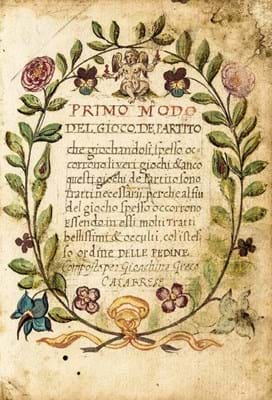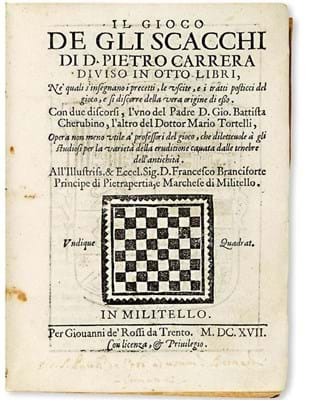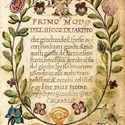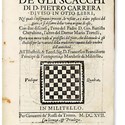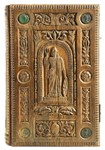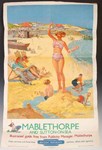Greco’s Trattato del nobilissimo gioco de scacchi of c.1619-20 circulated widely in manuscript across Europe, making him one of the key figures in the history of the game on the continent.
At Forum Auctions (25/20/12% buyer’s premium) on March 28 a rare version of that collection, with partiti, or chess problems, made £42,000.
Greco often compiled such small-format manuscripts for presentation to wealthy patrons, and – as in the case of this example of some 62 leaves – they were generally written in Italian by copyists and decorated by local artists.
Each was produced according to a patron’s individual preferences but while many such pocket handbooks may once have existed, very few have survived.
Forum said this undated manuscript was probably produced in Paris, where Greco had returned in 1624 after a successful stay in London.
“The handsome gilt-tooled binding, recalling Le Gascon’s style, and the floral border framing the title confidently indicate the years 1624-25…” said the cataloguer of this copy of what is one of the earlier such manuscripts recorded by Alessandro Sanvito in a 2005 work, I codici scacchistici di Giulio Cesare Polerio e Gioachino Greco.
This was the star turn of a 13-lot, single-owner collection of chess books.
A 1561 Spanish first of an important work on chess theory, Ruy Lopez de Sigura’s Libro de la Invencion Liberal y Arte del Juego del Axedrez…, sold at £7000.
In a 19th century binding of half purple morocco gilt, this copy bore the armorial bookplate of chess master and historian Baron Tassilo von Heydebrand und der Lasa (1818-99). In 1992, at Christie’s South Kensington, it had sold for £1400.
Manual and mechanical
Another early and rare Italian chess manual, Pietro Carrera’s Il Gioco de gli Scacchi of 1617, was sold in a Swann (25/20/12% buyer’s premium) sale of March 7 in New York. In a contemporary binding of limp vellum it improved substantially on the previous auction best in selling at $8500 (£6490).
A little woodcut of a chessboard is seen on the title-page and elsewhere in the text, but the largest and only other cut in the book features the arms of the dedicatee, Francesco Branciforte, Prince of Pietra and Marquess of Militello. This was the very first book to be printed in that Sicilian town, partly destroyed by an earthquake in 1694.
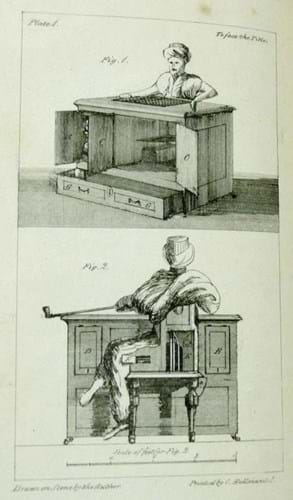
The frontispiece of Robert Willis’ Attempt to Analyse the the Automaton Chess Player…, part of a composite volume on that famous creation – £8400 at Thomson Roddick.
Bid to £8400 in a Carlisle sale held by Thomson Roddick (17.5% buyer’s premium) on March 27 was a volume containing a few short works or pamphlets on a famous automaton chess player created in 1770 by Wolfgang von Kempelen.
Also known as the ‘Mechanical Turk’, this robotic chess master appeared to be able to play successfully against human opponents, but in fact concealed a talented, if rather cramped human chess master who operated the mechanism.
For over 80 years the Turk toured the courts and theatres of Europe and the Americas, but – following its sale at a Freeman’s auction in 1838 – it was lost in a Philadelphia fire on 1854.
Other items making up the volume offered in Carlisle included Philip Thicknesse’s The Speaking Figure and the Automaton Chess Player Exposed of 1784 and two items of 1819: Letters of Charles Gottlieb de Windisch… about the automaton, and Observations on the Automaton Chess Player… by an un-named ‘Oxford Graduate’.
The most famous of them, however, was a copy of Robert Willis’ Attempt to Analyse the Automaton Chess Player… of 1821, complete with all plates and diagrams.


